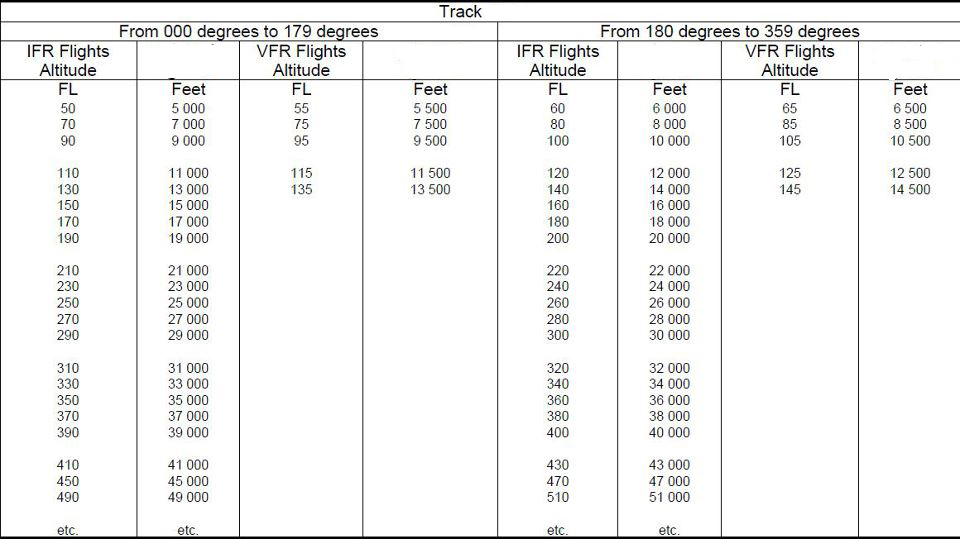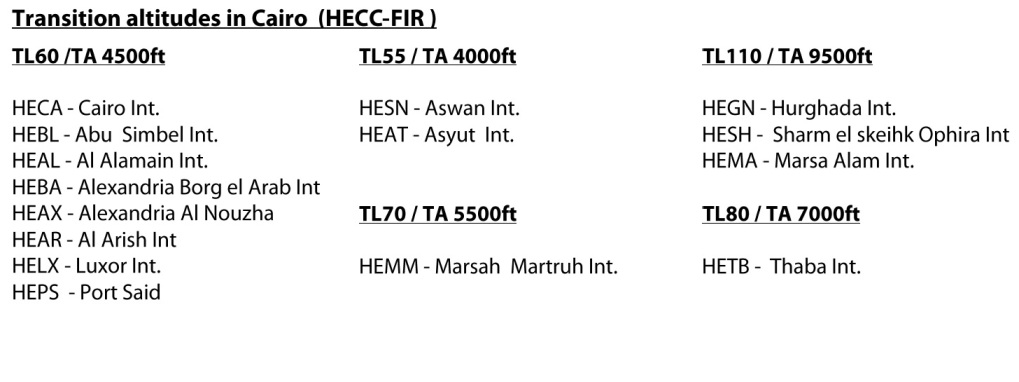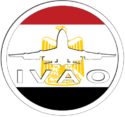ARAB REBUBLIC OF EGYPT DIVISION PROCEDURE
GENERAL
AIRSPACE STRUCTURE
CRUISING LEVELS
RVSM IN EGYPT
LOA LETTER OF AGREEMENT
SSR CODES
TRANSITION ALTITUDE (TA/TL)
VFR FLIGHTS IN CAIRO FIR
IFR FLIGHTS IN CAIRO FIR
EMERGENCY PROCEDURES
GENERAL RULES AND PROCEDURES
1.0 GENERAL RULES
The air traffic rules and procedures applicable to air traffic in Cairo FIR conform with Annexes 2 and 11
to the Convention on International Civil Aviation , and to those portions app
licable to aircraft, of the procedures for Air Navigation Services-Rules of the Air and Air Traffic Services, and the
RegionalSupplementary procedures applicable to the EUR Region, in addition to some parts of the procedures
applicable to the MID Region as specified in DOC 7030, except for the differences listed in GEN 1-7.
1.2 FUEL DUMPING
In general fuel dumping shall not be permitted over cities and towns away from areas where
thunderstorms have been reported or are expected and at heights not less than 6000FT. Precaution
shall be taken that no other ACFT is less than
3000FT below or 1000FT above the ACFT
dumping fuel. ACFT concerned shall exercise
dumping in one minute right hand holding pattern.
1.2.2 DUMPING AREAS ARE AS FOLLOWS:-
1. ALEXANDRIA AREA:
Area of dumping located not exceeding 11NM from
“NOZ” VOR/DME on radial 160 at altitude not less
than 6000FT.
2. ASWAN AREA:
Area of dumping located 15 NM from “ASN”
VOR/DME
on radial 310 at altitude not less than
6000FT.
3. CAIRO AREA:
Area of dumping located 15 NM south of “CVO”
DVOR/DME on radial 161 at altitude not less than
6000FT.
4. HURGHADA AREA:
Area of dumping located 15 NM from “HGD”
VOR/DME on radial 315 at altitude not less than
7500FT.
5. LUXOR AREA:
Area of dumping located 15 NM from “LXR”
VOR/DME on radial 165 at altitude not less than
6000FT.
6. SHARM EL-SHEIKH AREA:
Area of dumping located 19 NM from “SHM”
DVOR/DME on R-226 outbound at altitude not less
than 7000FT.
7. TABA AREA:
Area of dumping located 12 NM from “TBA”
VOR/DME on radial 290 at altitude not less than
6000FT.
8. EL-ARISH AREA:
Area of dumping located 30 NM from “ARH”
VOR/DME on radial 215 at altitude not less than
6000FT.
9. EL KHARGA AREA:
Area of dumping located 15 NM from “KHG”
VOR/DME on radial 284 at altitude not less than
6000FT.
10. ABU SIMBEL AREA:
Area of dumping located 10 NM from “SML”
DVOR/DME on radial 270 at altitude not less than
6000FT.
11. PORT-SAID AREA:
Area of dumping located 20 NM from “PSD”
DVOR/DME on radial 360 at altitude not less than
6000FT.
12. ASYUT AREA:
Area of dumping located 10 NM from “AST”
VOR/DME on radial 220 at altitude not less than
6000FT.
13. BORG EL ARAB AREA:
Area of dumping located 11 NM from on radial 160
at altitude not less than 6000FT.
14. MARSA ALAM AREA:
Area of dumping located 10 NM from “MAK”
DVOR/DME on radial 090 at altitude not less than
6000FT
AIRSPACE STRUCTURE
The Cairo Fir ( HECC_Ctr ) ATS airspace is classified and designated in three classes selected from ICAO ATS
airspace classification as shown in the following table:


Note : Airspace classes C, E, F and G are not used at present in the CAIRO FIR ( HECC_Ctr)
Prihibited , dangerous and restricted areas .
HE DXX dangerous area
HE PXX prohibited area
HE RXX Restricted area
CRUISING LEVELS

EXCEPTIONS ON FOLLOWING ROUTES
1) AWY A727 (LXR-SML)- To conform with inbound traffic over SML on Airway A727 portion BTN LXR/SML.
A) For northbound traffic EVEN flight levels.
B) For southbound traffic ODD flight levels
2) AWY W8 (AST-CVO) – To conform with inbound traffic over AST on Airway W8 portion AST/CVO.
A) For northbound traffic EVEN flight levels.
B) For southbound traffic ODD flight levels.
3) AWY W725 (NANVO-RASDA)
A- Southwest traffic RASDA/NANVO ODD flight levels.
B) Northeast traffic NANVO-RASDA EVEN flight levels.
4) AWY R650 (SHM/ASRAB):
A- Southwest traffic SHM/ASRAB ODD flight levels.
B) Northeast traffic ASRAB/SHM EVEN flight levels.
5) AWY V608 (HGD- OWT) :
A- Traffic HGD / NABED / AST / DAMPO / DAKHLA / OWT ODD flight levels.
B) Traffic OWT / DAKHLA / DAMPO / AST / NABED / HGD EVEN flight levels.
6) AWY W605 (OWT-LXR) :
A- Traffic LXR / ASN / SML ODD flight levels.
B) Traffic OWT / SML / ASN / LXR EVEN flight levels.
7) AWY W601 (DAKHLA-OWT)
A- Northeast traffic OWT/KHG/DAKHLA EVEN flight levels.
B) Southbound traffic DAKHLA/KHG/OWT ODD flight levels.
8) AWY N307 (MELDO-LAKTO)
A- Northeast traffic MELDO-LAKTO EVEN flight levels.
B) Southwest traffic LAKTO/MELDO ODD flight levels.
9) AWY W850 (MELDO -PASOS) Only westbound traffic ODD flight levels.
10) AWY W739 (LOPID-ASN) Only eastbound traffic EVEN flight levels.
RVSM IN HECC FIR
1.APPLICATION OF RVSM IN THE CAIRO FIR
RVSM shall be applicable in that volume of airspace between FL290 and FL410 inclusive within the whole Cairo FIR.
Non. RVSM compliant aircraft that intended to operate within this RVSM airspace will not be permitted
2.TRANSFERING PROCEDURS WITH OTHER FIR
TFC to Khartoum FIR: Over ATMUL: FL 290, 330 & 370
Over NUBAR: FL 310, 350, 390 & 410
Over ALEBA : all odd RVSM levels.
TFC from Khartoum FIR: Over ATMUL: FL 300, 340 & 380
Over NUBAR & ALEBA : all even RVSM levels
TFC to Tripoli FIR: Over LOSUL & DITAR: FL 300, 340, 360 & 380
TFC from Tripoli FIR: Over LOSUL & DITAR: FL 290, 330, 370 & 410
TFC from Athens FIR: Over SALUN: FL 310, 350, & 390
– Other RVSM FL are subject to prior co-ordination
3.RVSM PROCEDURES WITHIN CAIRO FIR ARE DETAILED IN DOC 7030 REGIONAL SUPPLEMENTARY PROCEDURES.
LOA LETTER OF AGREEMENT
Cairo Fir and Jeddah FIR ( OEJD_CTR)
HESH ARRIVALS AND DEP
Inb Cairo FIR
HESH arrivals coming from Jeddah Fir to PASAM should be leveled at FL140 at PASAM ,
Outbound Cairo Fir
HESH departures ,when deparing via PASAM to Jeddah FIR , should be leveled at or above FL150 when passing
PASAM intersection and transfered to OEJD_Ctr in time.
LUXOR ARRIVALS
Westbound traffic on airway L604 between IMRAD and ASRAB intersections only for Luxor HELX landings approved.
AIRROUTE L315
Dep from jeddah FIR between GIBAL and HGD , for HEGN and HESH arrivals only
CAiro Fir and Tel Aviv FIR (LLLL_CTR)
Departures from HECA FIR to TEL AVIV FIR , via NALSOonly
Departures from Tel AVIV FIR to CAIRO FIR , via NALSO only
LLET arrivals have to be Leveled at FL090 when passing NALSO , and transferred to LLLL_TWR ( if TWR is not online , will
transfer to LLLL_CTR ) via HETB_TWR and if HETB_TWR is not online will be via HECC_CTR .
LLET departure have to be Leveled at FL070 when passing NALSO , and transferred to HECC_CTR in time .
Cairo Fir and Amman FIR (OJAC_CTR)
Departures from CAiro FIR landing in Aqaba( OJAQ ) should be level at FL170 at NWB , then DESC to 11000FT to be leveled
at METSA . Transfer Traffic on D10.0 NWB to OJAC_CTR or OJAQ_APP in time.
Departures from Aqaba OJAQ via METSA to HECC_FIR , should be leveld at METSA at 12000ft or above. Departing from OJAQ into
HECC_FIR only via METSA DEP , no direct alowed .
TRANSITION ALTITUDES IN CAIRO FIR ( HECC_FIR )

SSR CODES
International DEP 3320- 3347 // 7301-7377
International over flights. 1601- 1677 // 3350- 3377
DEP Cairo – Domestic 2701-2777
ARR Cairo Domestic 0601- 0677
Domestic flights other than Cairo 2340 – 2377
Hurghada local flights 2310- 2327
Sharm El Sheikh Local flights 2330- 2337
El-Arish Local flights 2301- 2327
Borg El-Arab Local flights 2330- 2337
Luxor Local flights 2301- 2307
Aswan local flights 2320- 2327
VFR 7000 –7277
Hi Jacking 7500 ( not alowed on IVAO )
Radio Communication Failure 7600
Emergency 7700
VFR FLIGHTS IN CAIRO-FIR _(HECC_CTR)
1. Except when operating as a special VFR flight, VFR flights shall be conducted so that
the aircraft is flown in conditions of visibility and distance from clouds equal to
or greater than those specified in table (1)
2. Except when a clearance is obtained from an air
traffic control unit, when deemed necessary, VFR flights shall not take–off
or land at an aerodrome within a control zone, or enter the aerodrome traffic
zone or traffic pattern:
a) when the ceiling is less than 450M (1500FT); or.
b) when the ground visibility is less than 5KM.
3. VFR flights between sunset and sunrise shall not be operated.
4. Unless authorized by
the appropriate ATS authority, and subject to specified
conditions prescribed by that authority, VFR flight shall not be operated:
a) above FL 150.
b) at transonic and supersonic speeds.
5. Except when necessary for take -off or landing, or except by permission from
the appropriate authority, a VFR flight shall not be flown :
a) over the congested areas of cities, towns or
settlements, or over an open air assembly of persons at a height less than 300M (1000FT)
above the highest obstacle within
a radius of 600M from the aircraft.
b) elsewhere except as specified in (a) aircraft shall not
be flown at a height less than 300M (1000FT) above
the ground or water.
For detailed Airport VFR procedures visit eg.ivao.aero.
INSTRUMENT FLIGHT RULES
1. Rules applicable to all IFR flights
1.1 Aircraft Equipment
Aircraft shall be equipped with suitable instruments, and with navigation equipment appropriate to the route to be flown.
1.2 Minimum levels
Except when necessary for take-off or landing or when specifically authorized by the appropriate authority, an
IFR flight shall be flown at a level that is not below the minimum flight altitude established for the route.
1.3 Change from IFR flight to VFR flight
1.3.1 An Aircraft electing to change the conduct of its flight from compliance with the instrument flight
rules to compliance with the visual flight rules shall notify the appropriate air traffic services unit
specifically that the IFR flight is cancelled and communicate thereto the changes to be made to ist current flight plan.
2. Rules applicable to IFR flights within controlled airspace
2.1 IFR flights shall comply with the provisions of
3.6 of ICAO Annex 2 to the Convention onInternational Civil Aviation when operated in controlled airspace.
2.2 An IFR flight operating in cruising flight shall be flown at a cruising level selected from :
a) The tables of cruising levels in Appendix 3 of ICAO Annex 2, or
b) A modified table of cruising levels, when so prescribed in accordance with Appendix 3 of ICAO
Annex 2 for flight above FL410, except that the correlation of levels to track prescribed therein shall not
apply whenever otherwise indicated in air traffic control clearances or specified by the appropriate ATS authority
in the Aeronautical Information Publication (AIP).
3. Operations on ATS Routes in Cairo FIR where an RNAV type is specified:
3.1 Application of RNAV 5 to ATS routes in Cairo FIR.
3.1.1 Requirements for RNAV capability and aircraft navigation accuracy meeting RNAV 5 are progressively introduced in Cairo FIR.
3.1.2 Within Cairo FIR in the level band FL160/460 (inclusive), only RNAV equipped aircraft having a
navigation accuracy meeting RNAV 5 may plan for operations under IFR on those ATS routes, and within those level bands, which
have been specified as requiring RNAV 5 in 3.2.
3.1.3 Aircraft operating under IFR on designated RNAV 5 routes shall be equipped with, as a minimum, RNAV equipment meeting
the following requirements:
a) A system use accuracy equal to, or better than, 4.6 KM (2.5NM) for one standard deviation, with a 95 percent containment
value of plus or minus 9.26km (plus or minus 5 NM, thereby meeting the accuracy requirements for RNAV 5
b) An average continuity of service of 99.99 percent of flight time.
3.2 Area of applicability
3.2.1 Egypt RNAV 5 ATS routes are that all ATS routes within Cairo FIR in the level band FL160/460 (inclusive), except that
ATS routes with width less than 10NM.
4.0 departures and arivall procedures in CAiro FIR
4.1 For departures expect an initial climb on rwy HDG , at all Airports in Cairo Fir. No SID are in use in Cairo FIR
4.2 For arriaval expect radar Vectors to final , no Stars are in use in Cairo FIR . RNAV avail on reuqest.
EMERGENCY PROCEDURES
1.0Emergency procedures
1.1.1 Except when encountering a state of emergency, pilots shall operate transponders and
select modes and codes in accordance with ATC instructions. In particular, when entering Cairo FIR,
pilots who have already received specific instructions from ATS concerning the setting of the transponder
shall maintain that setting until otherwise instructed.
2.1.2 All aircraft operating within Cairo FIR are required to carry SSR transponders Mode A & C (A/3) 4096 Codes. Pilots of
aircraft about to enter Cairo FIR who have not received specific instructions from ATC concerning the setting of the
transponder shall operate the transponder´of Mode A/3, (Code 2000) before entry and maintain that code setting until
otherwise instructed.
2.1.3 If the pilot of an aircraft encountering a state of emergency has previously been directed by ATC to
operate the transponder on a specific code, this code setting shall be maintained until otherwise advised.
2.1.4 In all other circumstances, the transponder shall be set to Mode A/3, (Code 7700).Notwithstanding the procedure in
2.1.1 above, a pilot may select Mode A/3, Code 7700 whenever the nature of the emergency is such that this appears to be
the most suitable course of action.
Note: Continuous monitoring of responses on Mode A/3, Code 7700 is provided.
2.2 Radio communication failure and unlawful
interference procedures
2.2.1 Radio communication failure procedure
In the event of an aircraft radio receiver failure, a pilot shall select Mode A/3, Code 7600 and follow established
procedures; subsequent control of the aircraft will be based on those procedures.
!!! NOT ALOWED IN IVAO !!!
2.2.2 Unlawful interference procedure Pilots of aircraft in flight subjected to unlawful interference shall endeavor to set
the transponder to Mode A, Code 7500 to make the situation known, unless circumstances warrant the use of Mode A/B,
Code 7700.
